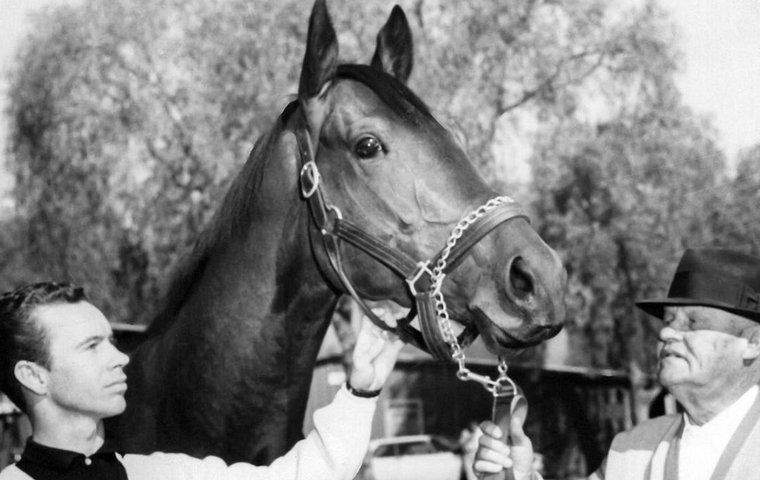
Jay Hovdey continues his unmissable series with a durable West Coast racehorse who may have been denied Classic glory but won an enduring place in his heart in the early 1960s
It all starts somewhere, this passion for Thoroughbreds.
The source code can come from a grandfather who was a nut for all manner of sports. He would take his grandson to Lane Field near San Diego Harbor to watch the minor league Padres, to the downtown arena for wrestling and roller derby, across the border to Agua Caliente for greyhounds and horses.
And because the television shows the boy watched were 80 per cent Westerns, teeming with incredible steeds, it was the racehorses that thrilled him most of all.
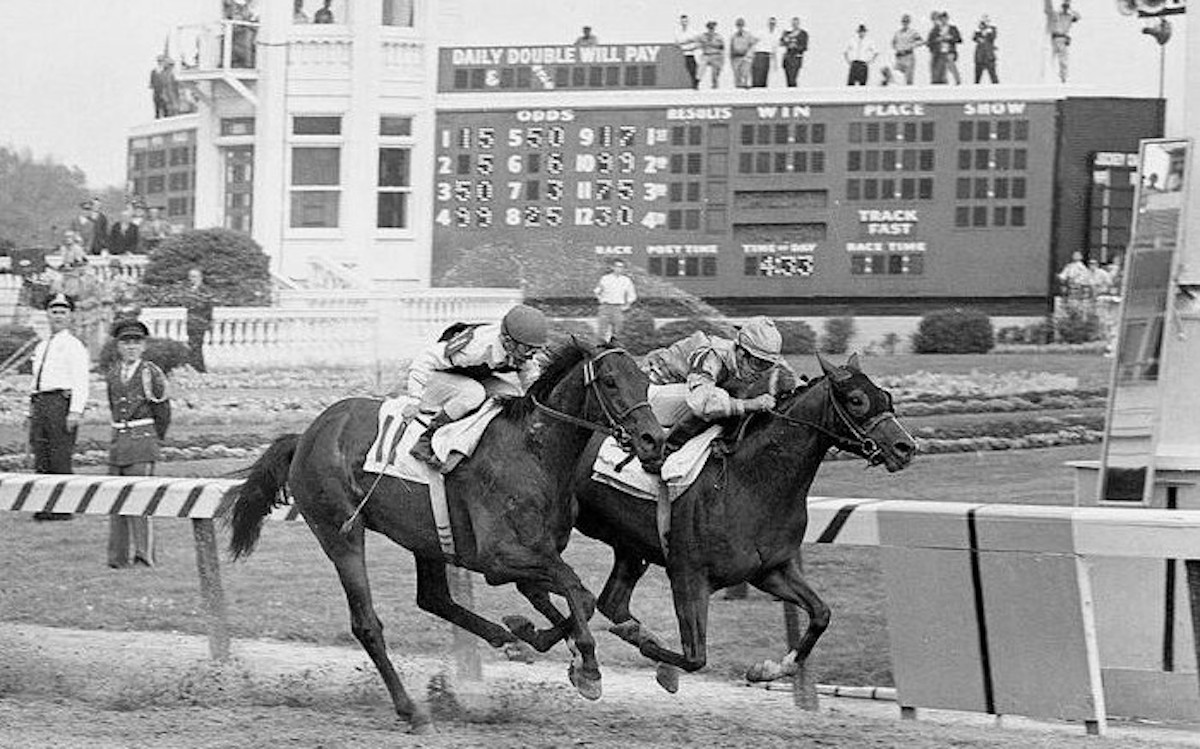 It could have stopped there, as an arm’s length fan and follower of racing, a sterile yet entertaining environment nurtured by newspapers and the occasional network broadcast.
It could have stopped there, as an arm’s length fan and follower of racing, a sterile yet entertaining environment nurtured by newspapers and the occasional network broadcast.
But then something happened. Then a horse came along that hit a nerve. His name was Hill Rise, and he is why I’m here, still writing about horses more than half a century after he was born.
There is no accounting for taste when it comes to Thoroughbred heroes. Hill Rise was from California, so that was a head start, with a name that was easy on the ear. He raced for El Peco Ranch, a cool handle, represented by a red cap and silks with a wide black band topped by a white yoke and sleeves. Dashing.
Hill Rise himself was a tall, darkish bay with no distinguishing marks and a regal arch to his neck, so in that sense he may have satisfied some classic ideal. Mostly, he came to my attention as part of a three-year-old glamour division by winning often and with style –eight races in a row at one point before he took the ultimate stage in the 1964 Kentucky Derby and Triple Crown.
Hill Rise was bred and owned by George Pope Jr., whose family was part of the Pope & Talbot lumber and shipping company that branched out into Thoroughbreds at El Peco Ranch in Madera, just north of Bakersfield in California’s Central Valley.
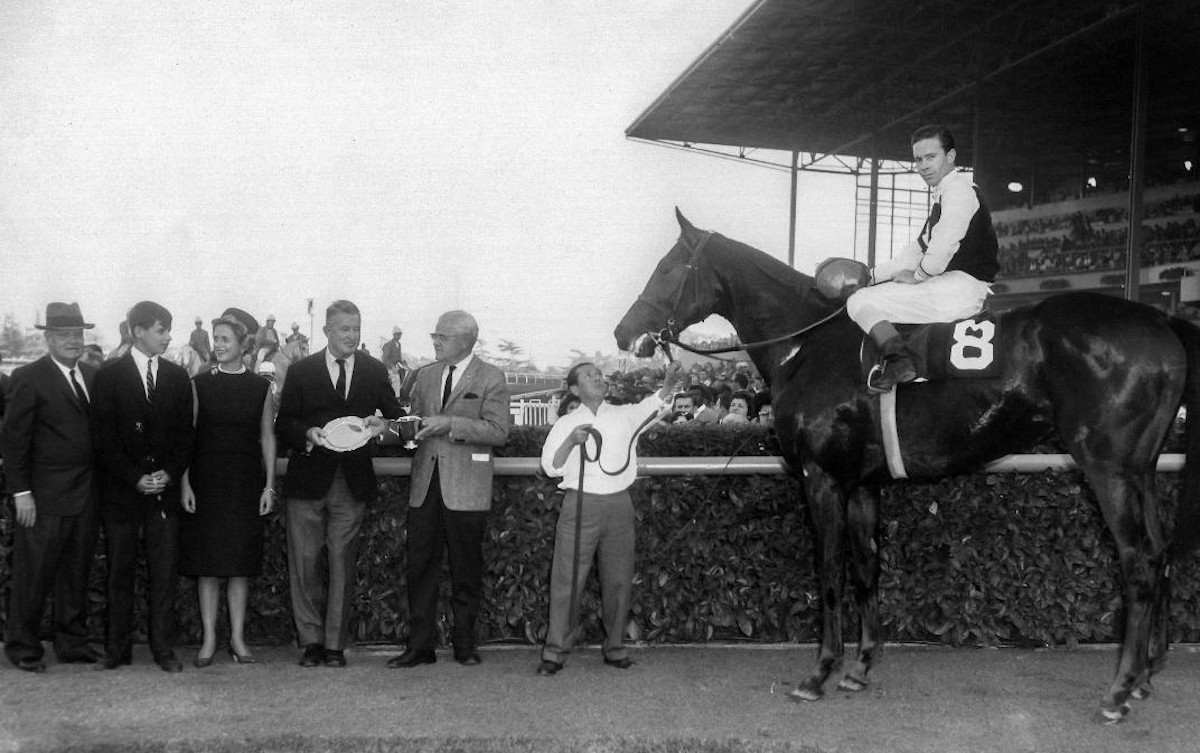 He was by far the most successful offspring of the stallion Hillary, winner of the La Jolla Handicap at Del Mar and second in Santa Anita’s Malibu, who came from the 1952 California crop of the Hyperion stallion Khaled, winner of the Coventry Stakes at Royal Ascot and Middle Park at two and the St James’s Palace Stakes back at Ascot at three.
He was by far the most successful offspring of the stallion Hillary, winner of the La Jolla Handicap at Del Mar and second in Santa Anita’s Malibu, who came from the 1952 California crop of the Hyperion stallion Khaled, winner of the Coventry Stakes at Royal Ascot and Middle Park at two and the St James’s Palace Stakes back at Ascot at three.
West Coast institution
Khaled was purchased by Rex Ellsworth from the Aga Khan when the Arizona rancher couldn’t afford Nasrullah, then went on to become a West Coast institution as the sire of three Santa Anita Handicap winners, Hollywood Gold Cup winner Correspondent, and the dam of inaugural Breeders’ Cup Classic winner Wild Again.
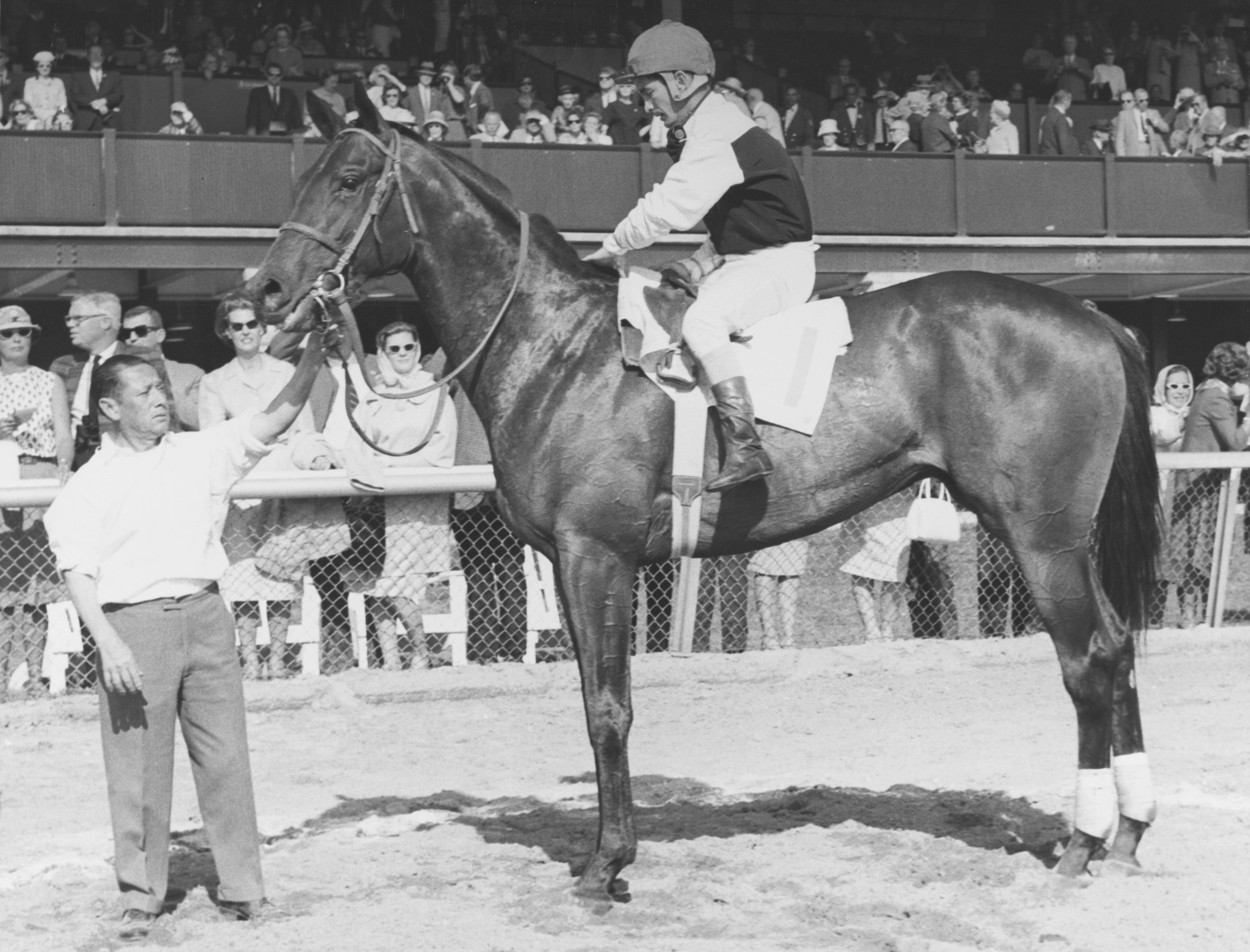 And while Khaled was credited with just 13 named foals in 1952 besides Hillary, one of the others was Swaps – a Kentucky Derby winner and 1956 Horse of the Year – so Ellsworth could hardly complain.
And while Khaled was credited with just 13 named foals in 1952 besides Hillary, one of the others was Swaps – a Kentucky Derby winner and 1956 Horse of the Year – so Ellsworth could hardly complain.
Hillary’s dam was Snow Bunny, a non-winner by 1937 Eclipse Stakes winner Boswell. The next four dams in her pedigree managed one winner among them, but then up pops the French filly Medeah, who dominated her generation in the Prix de Diane, vanquished older mares in the Prix Vermeille, and dusted colts in the Prix Royal-Oak. Just because all that took place in 1908 doesn’t mean it didn’t happen.
La Flambee, Medeah’s foal of 1912, left a mark in racing history through her daughter Flambette, winner of the 1921 Coaching Club American Oaks. Gallette, Flambette’s daughter, was not much of a racehorse, but all was forgiven when she produced Gallorette, the male-bashing mare of the late 1940s who is on everyone’s list of all time greats.
Red Curtain, the dam of Hill Rise, was by Russia, a mid-century representative of the Matchem sire line through English Triple Crown winner West Australian and 1916 St Leger winner Hurry On. As a son of the imported Excitement, Russia was an Australian product of New South Wales who won more than a dozen major events, including the 1946 Melbourne Cup.
In 1949, Russia was retired and purchased by the American David Davies – better known as the owner of Phar Lap – and imported to California. There Russia was mated in 1952 to Jessie-o-Doon, a daughter of the modest Irish racehorse Brig O’ Doon, who at least brought to the party a sire line blessed with Ascot Gold Cup winner Cylline and the imposing Bend Or, the star of the British Turf for three years running, 1879-81.
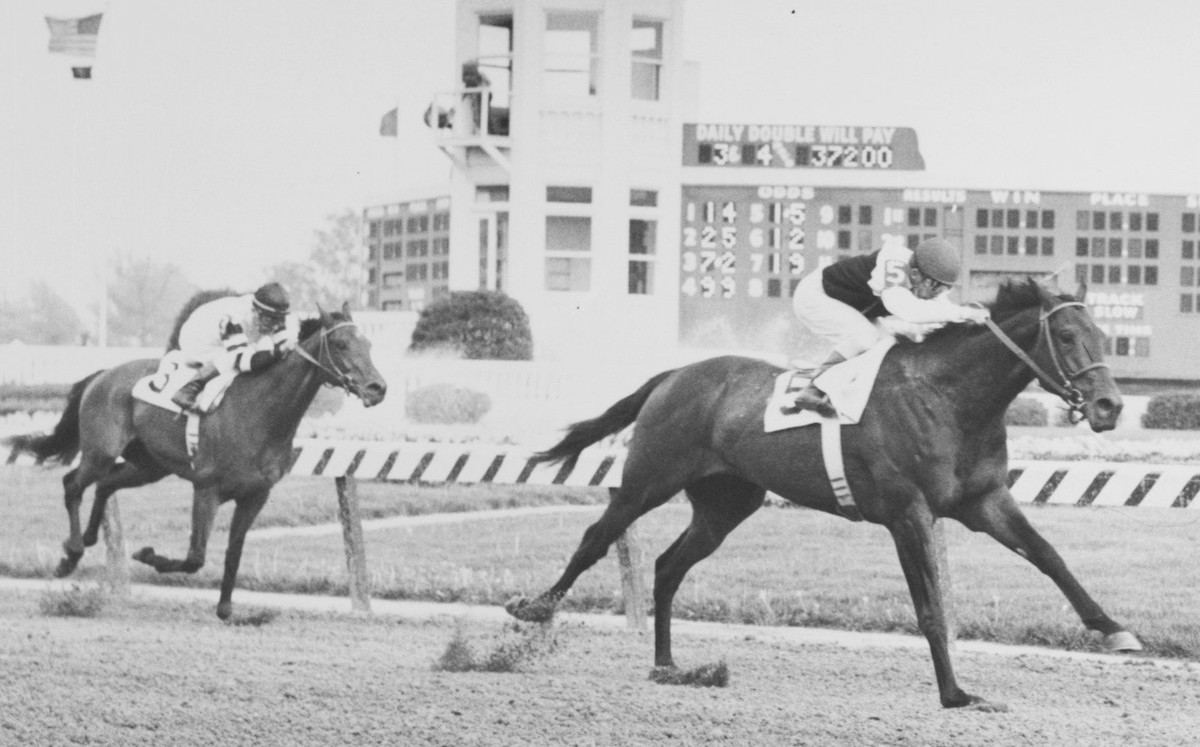 Red Curtain, the resulting foal, was a half sister to George Pope’s first major stakes winner, Mary Machree, who took the 1956 Vanity Handicap at Hollywood Park. Until Jessie-o-Doon came along, the female family had been reproducing without distinction for the better part of a century.
Red Curtain, the resulting foal, was a half sister to George Pope’s first major stakes winner, Mary Machree, who took the 1956 Vanity Handicap at Hollywood Park. Until Jessie-o-Doon came along, the female family had been reproducing without distinction for the better part of a century.
Perhaps there was something in California’s Central Valley water that invigorated the line. When Mary Machree was bred to Hillary, she produced major stakes winners Hill Circus and Hill Clown. When Red Curtain was bred to Hillary, she produced the stakes winner Hill Run, as well as Hill Rise.
His foal date was April 7, 1961. As a yearling he was rejected by the flamboyant trainer Horatio Luro, who won the 1962 Kentucky Derby for Pope with Decidedly and therefore could do no wrong. The young Hill Rise was, according to Luro in Sports Illustrated, “a big and rangy bay, the kind you know you have to develop slowly.”
Luro’s scoff was William Finnegan’s gain. As Pope’s main California trainer, Finnegan was already respected for his work with a host of major stakes winners, including Seaneen, Ole Fols, and Big Pebble, ranked on some polls as the top US older horse of 1941.
Serious young talent
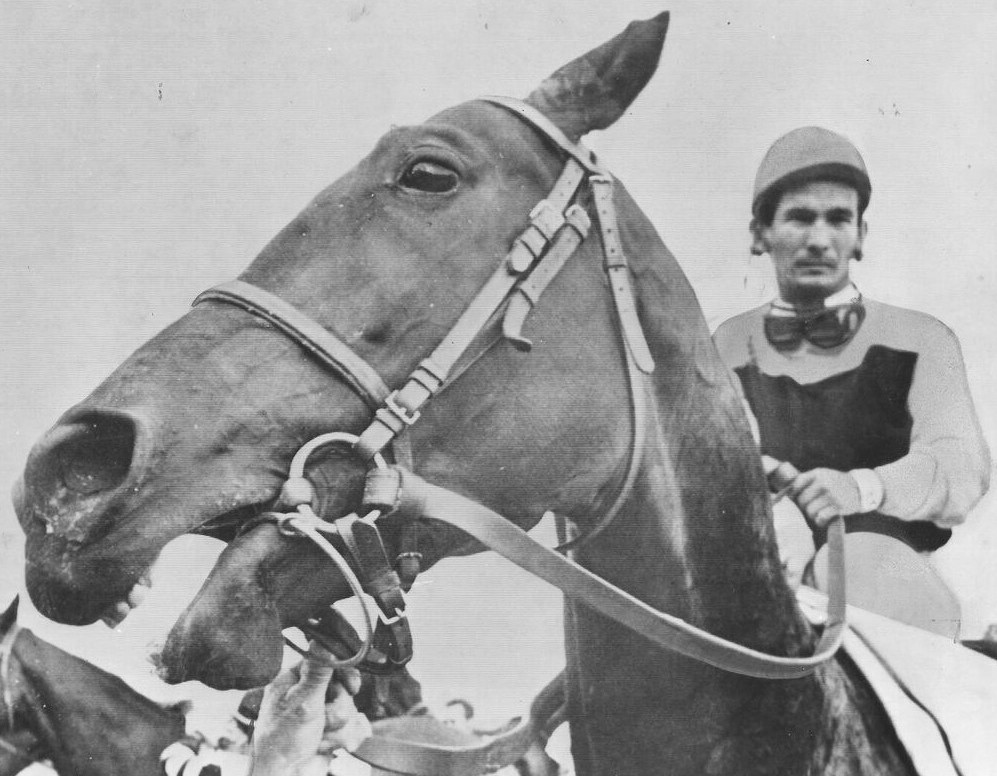 Finnegan brought Hill Rise to the races going five furlongs in May 1963 and had to settle for a pair of third-place finishes at Hollywood Park.
Finnegan brought Hill Rise to the races going five furlongs in May 1963 and had to settle for a pair of third-place finishes at Hollywood Park.
The colt, still a growing boy, was put away for the summer and returned in November to win a maiden race at Golden Gate Fields by nine lengths, then an allowance race there by a comfortable 2¾ lengths, still sprinting.
To that point, Hill Rise had been ridden by four different jockeys. Finnegan figured he had a serious young talent on his hands and wanted a rider in for the long haul, which is why he called on Don Pierce.
The Oklahoma native was 26 at the time and more than holding his own against a California riding colony topped by Bill Shoemaker, John Longden, Milo Valenzuela, and Johnny Sellers.
By 1963, Pierce had already won the Santa Anita Handicap twice along with the Del Mar Handicap, Santa Susana Stakes (now Santa Anita Oaks), Del Mar Debutante, and New York’s Hopeful Stakes for the prestigious Greentree Stable.
True horseman and wonderful gentleman
“Me and my agent were looking for a good coming three-year-old, maybe even a Derby horse,” said Pierce, 86, who entered the racing Hall of Fame in 2010. “Finnegan asked us to go up to Golden Gate to ride Hill Rise in a stake race. We didn’t think twice. Bill Finnegan was a true horseman and a wonderful gentleman.”
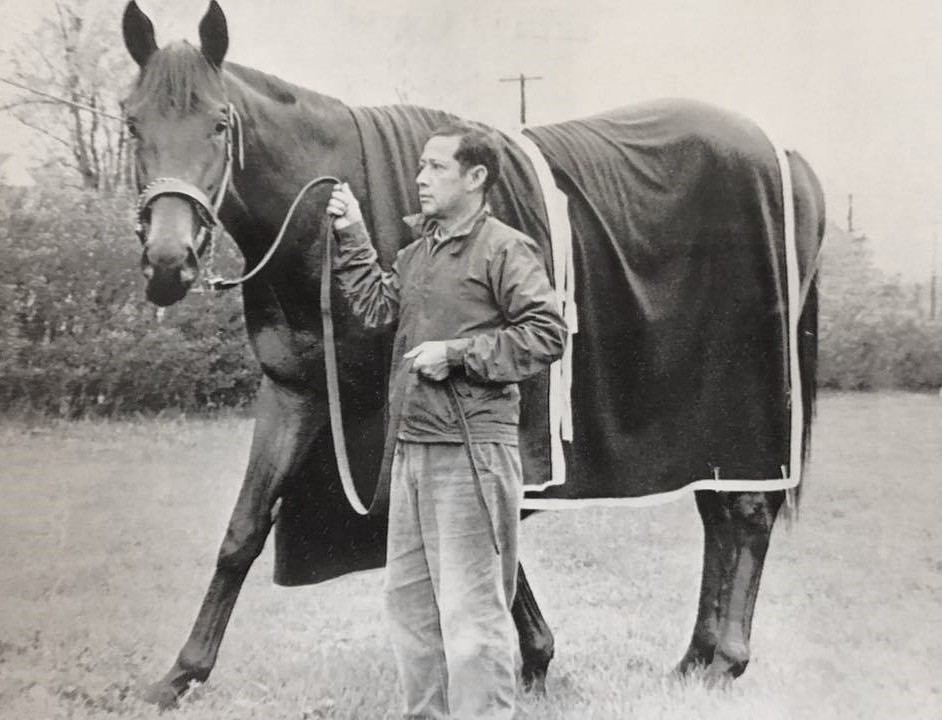 Horse and rider hit it off immediately. On Dec. 14, they made quick work of the Golden Gate Freshman Handicap at a mile and one-sixteenth, then came back two weeks later to win the seven-furlong California Breeders’ Champion Stakes at Santa Anita.
Horse and rider hit it off immediately. On Dec. 14, they made quick work of the Golden Gate Freshman Handicap at a mile and one-sixteenth, then came back two weeks later to win the seven-furlong California Breeders’ Champion Stakes at Santa Anita.
Of course, in those days as far as the eastern establishment was concerned, anything happening that late in California was like a tree falling in a vacant forest. In the year-end Experimental Handicap weights compiled by New York official Tommy Trotter, Raise A Native (unbeaten in four New York sprints) was accorded topweight of 126 pounds, one more than division champion Hurry To Market, winner of the Garden State Stakes. Hill Rise was rated at 115.
Such a slight mattered not to Finnegan and Pierce, who kept their counsel as Hill Rise flourished. In his three-year-old debut, he took the San Felipe Handicap by a measured head over Wil Rad, who was fresh from winning the San Vicente Handicap.
In the subsequent Santa Anita Derby, on Feb. 29, 1964, Hill Rise glided home by six lengths, with Pierce barely moving a muscle. His clocking of 1:47⅖, under wraps, was a stakes record for a race won by such headliners as Silver Spoon, Hill Gail, Your Host and Candy Spots.
“What makes him look especially like a Kentucky Derby type is the fact that he has the necessary speed to get a good position and still retain a strong kick for the Churchill Downs stretch,” wrote Whitney Tower of Hill Rise in Sports Illustrated. “For even the stoutest-hearted animal that is a quarter of a mile of sheer agony.”
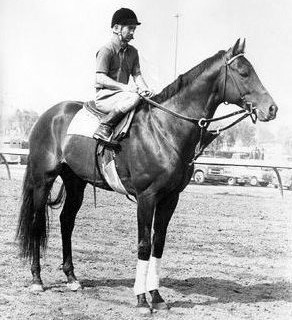 So it looked like Pierce had his Derby horse. Or did he? Dan Smith, a Santa Anita publicist at the time, recalls the jockey as unusually somber following the local Derby triumph.
So it looked like Pierce had his Derby horse. Or did he? Dan Smith, a Santa Anita publicist at the time, recalls the jockey as unusually somber following the local Derby triumph.
“Don knew already that he was being replaced by Shoemaker,” Smith said. “Even though Don had never lost on the horse, Pope wanted Shoe. That happened a lot to jockeys back then.”
Disappointed but not surprised
Shoemaker was in his prime, on a roll of six straight national championships and Kentucky Derby wins in 1955 with Swaps and 1959 with Tomy Lee. Pierce had ridden the Derby once, finishing 10th on longshot Fighting Hodge in 1960. “I was disappointed, but not surprised,” Pierce said. “Shoe was the man.”
Finnegan shipped Hill Rise to Kentucky and went right to work. At Keeneland, his colt won the Forerunner Purse at seven furlongs. Shifting to Churchill Downs, Finnegan went old school and entered Hill Rise in the Derby Trial Stakes, run five days before the May 2 Derby. He won easily, with a fast mile over a surface deadened by rain.
“I feel better about this colt now than I did before my other Derbys,” Shoemaker told the New York Times after the Trial.
That clinched it. With a daunting win streak and a lofty endorsement from the nation’s pre-eminent jockey, Hill Rise was proclaimed the favorite for the 90th running of the Kentucky Derby. The Churchill Downs crowd agreed, making the western colt a 7-5 shot.
Back in Southern California, this fan finished his yard work early enough to settle in front our black and white RCA console TV and delight in the inevitable coronation of Hill Rise. My Hill Rise.
Then Bill Hartack happened. Shoemaker had ridden the Canadian colt Northern Dancer to victories that year in the Flamingo Stakes and Florida Derby. When Shoe jumped to Hill Rise, Hartack took his place on Northern Dancer and promptly won the Blue Grass Stakes.
Of Hartack’s three Kentucky Derby winners already on the books, the most (in)famous occurred in 1957, when Shoemaker misjudged the finish line aboard Gallant Man, allowing Hartack and Iron Liege to win by a nose.
As Pierce had pointed out to Shoemaker, Hill Rise preferred to run in the clear, and he could not have had a better trip in the Derby’s 12-horse field. Hartack, meanwhile, had to work through horses for his best position, but he got the job done and arrived at the head of the long stretch with the advantage on his rival.
Hill Rise and Shoemaker had dead aim on the leader through that interminable final quarter-mile, but Northern Dancer would not yield. They came together at the end, with Northern Dancer winning by a neck in record time of two minutes flat.
“No regrets,” said Shoemaker, when asked about switching horses in mid-spring. “I just rode a horse who ran the Derby faster than any horse ever, save the winner. And I was catching him at the end, but not quick enough.”
Years later, whenever he was asked, Shoemaker conceded that Hill Rise would have won the Derby had Pierce been aboard. “That’s the kind of guy Shoe was,” Pierce said.
Two weeks after the Derby, Hill Rise was rendered odds-on to turn the tables on Northern Dancer in the Preakness Stakes. It was a terrible tease, because it was plain the nimble Canadian colt had the clear tactical advantage on the long-striding Californian. Northern Dancer promptly won again, and Hill Rise was third, beaten 2½ lengths. For this fan, the dream was dashed. They might as well have carried Hill Rise home on his shield.
Fifth start in seven weeks
Instead, Pope demanded his horse run in the Belmont Stakes, figuring the mile and a half would suit Hill Rise to a tee. The owner apparently did not take into account that it would his fifth start in seven weeks. In a Belmont run at Aqueduct, Hill Rise finished half-a-length behind Northern Dancer, but the tired warriors were third and fourth, some six lengths behind victorious Quadrangle.
The page turned, and life went on. For a Southern California fan, national racing coverage in the mid-1960s was scarce. Wire services circulated news of major races in New York, Chicago and California.
Saturday feature races still had a foothold on local television during Santa Anita and Hollywood Park. But if the Santa Ana Register mentioned that Pierce and Hill Rise were reunited for a fourth-place finish in a four-horse Jim Dandy Stakes at Saratoga, I missed it. Likewise any news of his admirable third in the subsequent Travers, in which he was beaten just a length and a half by Quadrangle in the slop.
In retrospect, it’s a good thing I did not encounter the report from the New York Times the day after Hill Rise won an overnight handicap at Aqueduct while carrying 127 pounds, in which reporter Joe Nichols referred to my hero’s “sorry recent record”.
In his next starts, Hill Rise was flat in the Jerome Handicap and finished fourth in the Discovery Handicap, beaten less than two lengths by Roman Brother, after which Finnegan brought him home to California, badly in need of a break.
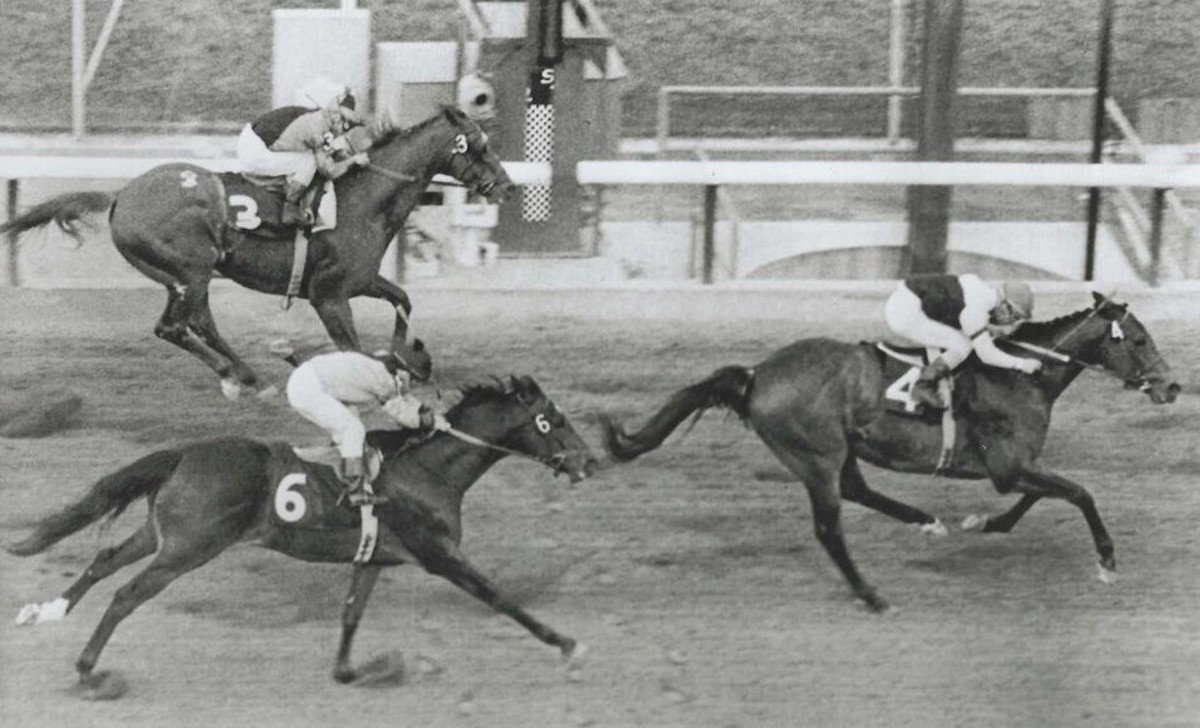 According to Pope, Hill Rise was treated for a sore back before re-emerging as a four-year-old in early 1965 with a succession of stakes appearances that would bring a modern Thoroughbred to its knees.
According to Pope, Hill Rise was treated for a sore back before re-emerging as a four-year-old in early 1965 with a succession of stakes appearances that would bring a modern Thoroughbred to its knees.
In the 62 days between Jan. 2 and March 11, Hill Rise ran in the seven-furlong Malibu Stakes (3rd), the nine-furlong San Fernando Stakes (1st), the 10-furlong Charles H. Strub Stakes (4th), the nine-furlong San Antonio Handicap (5th), the 10-furlong Santa Anita Handicap (1st), and the 14-furlong San Juan Capistrano Handicap (3rd), his first start on grass.
The Santa Anita Handicap was especially sweet, coming at odds of 12-1 (if only I’d had a way to bet my allowance). Hill Rise was the first Santa Anita Derby winner to take the Handicap the following year, while Pierce was winning the race for the third time. Sweeter still, the horse they beat was Candy Spots, ridden by Shoemaker.
In the flesh
I finally got to see Hill Rise in the flesh in July ’65 in the Hollywood Gold Cup. He finished third to the swift Native Diver, who thrived over Hollywood Park’s hardpan main track, and lost nothing in my eyes.
Hill Rise went on to another eastern campaign every bit as testing as his winter ordeal at Santa Anita, comprised of five major races in 48 days, on both dirt and grass. He came within a neck of beating turf ace Parka in the United Nations Handicap, then ended the season with flare by winning the 13-furlong Man o’ War Stakes at Aqueduct by six lengths.
Clearly, this was a beast of remarkable durability, a trait that this fan came to respect almost above all others. Hill Rise, handsome as ever and honest to a fault, embodied Woody Allen’s formula that “80% of success is showing up”.
In the year-end Free Handicap sponsored by Daily Racing Form, Hill Rise and Parka were ranked at the top of all turf horses at 128 pounds.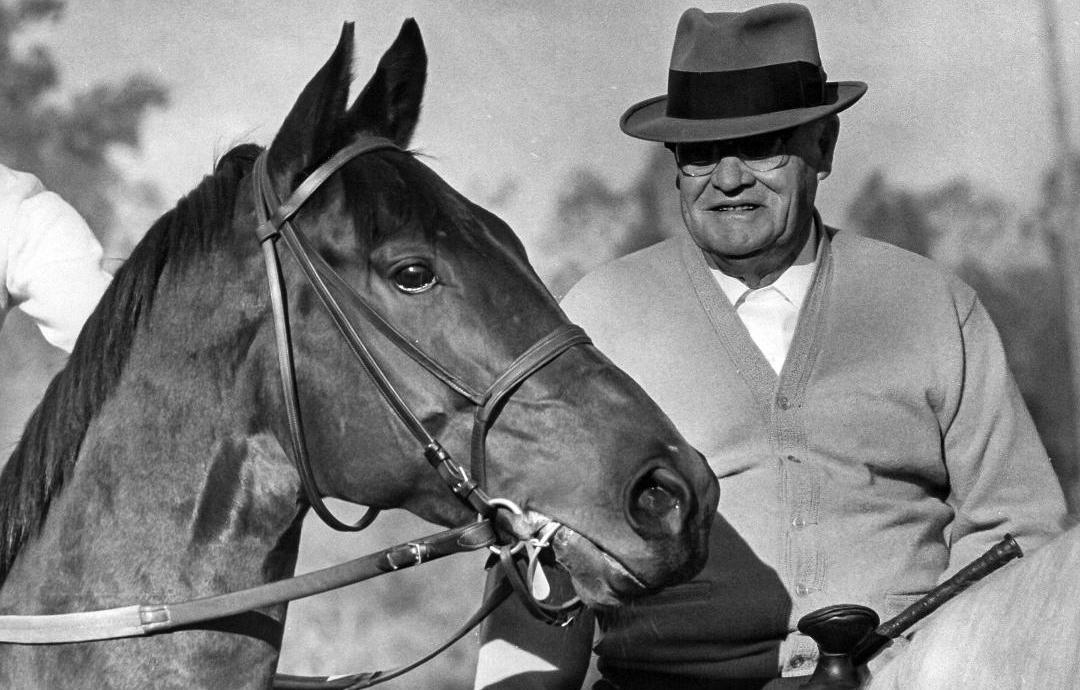
Pope’s plan all along was for Hill Rise to race at age five, and so began another grueling winter in 1966 with the seven-furlong San Carlos Handicap (2nd), the San Pasqual Handicap (6th), the San Antonio (1st), the Santa Anita Handicap (5th), and the San Juan Capistrano (4th).
Clearly, his consistency was eroding, but Hill Rise can be forgiven the San Juan. The race marked the final ride of the legendary John Longden, who admitted to age 59 at the time. Riding George Royal, Longden dropped in on Hill Rise entering the far turn as he launched a dramatic, winning ride. Hill Rise recovered, but given the circumstances, jockey Manuel Ycaza was not about to claim foul.
Across the pond
Hill Rise again disappeared from my radar until one day, several months later, I noticed a small item in the sports pages of the Anaheim Bulletin that called attention to a race in England won by an American invader.
According to the Associated Press, the race was the Rous Memorial Stakes at Ascot Racecourse, and the horse was Hill Rise: “American-owned Hill Rise, running its first race in England, pulled off the big upset of the day at the Royal Ascot horse race meet Friday by winning at 20-1 and beating champion miler Silly Season.”
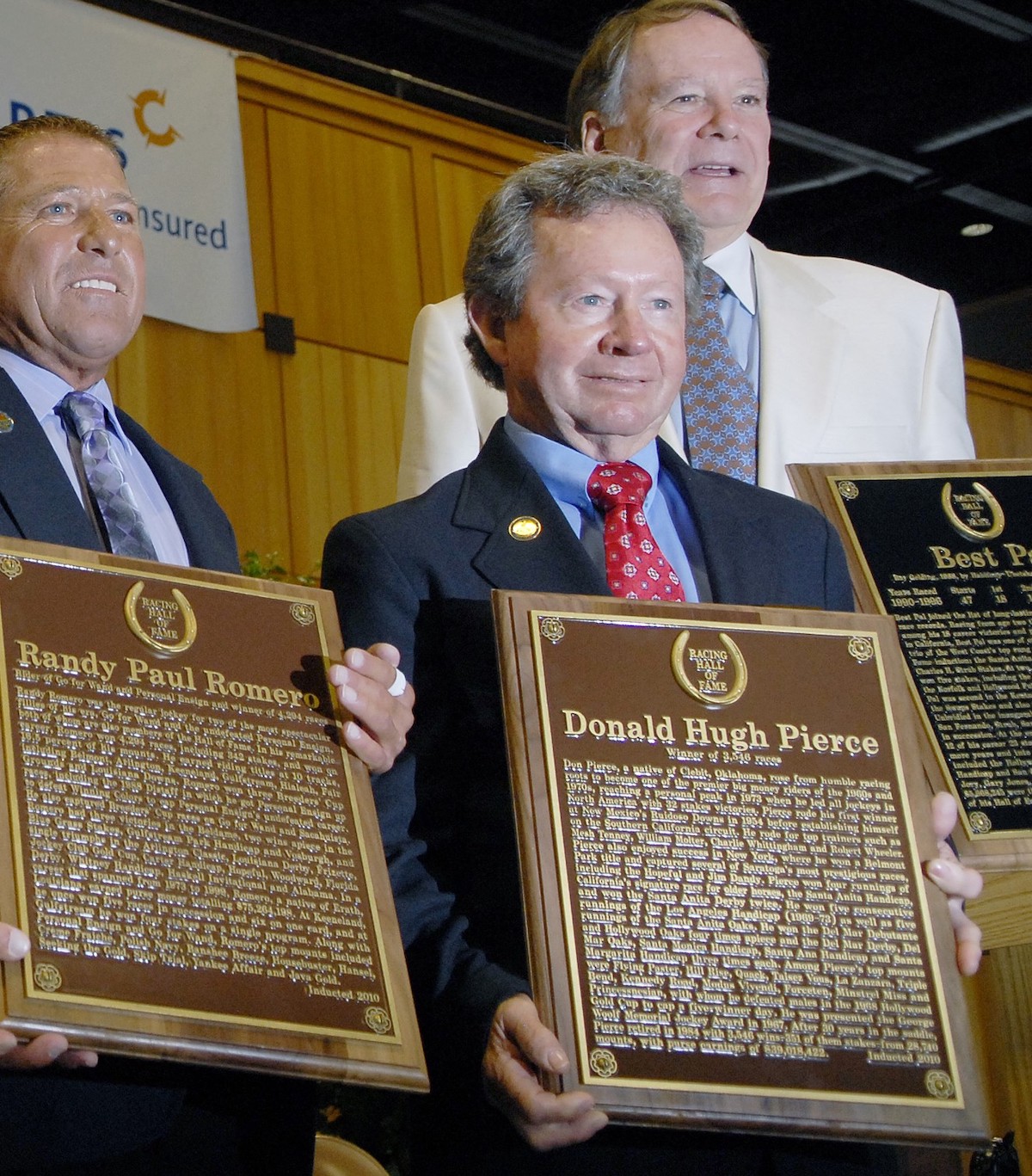 So that’s where the old boy went. Now trained by Noel Murless, Hill Rise raced three more times in England. He was fourth to Aunt Edith in the showpiece King George VI and Queen Elizabeth Stakes, defeated Silly Season again in the Queen Elizabeth II Stakes, and finished fourth in the Champion Stakes to Pieces Of Eight in his 43rd and final race.
So that’s where the old boy went. Now trained by Noel Murless, Hill Rise raced three more times in England. He was fourth to Aunt Edith in the showpiece King George VI and Queen Elizabeth Stakes, defeated Silly Season again in the Queen Elizabeth II Stakes, and finished fourth in the Champion Stakes to Pieces Of Eight in his 43rd and final race.
Bill Finnegan died in 1970 at 80, still winning stakes near the end of his life. Pope was 77 when he passed away in 1979, having enjoyed further success with such homebred stars as Mysterious, J.O. Tobin, and Jumping Hill.
As for Hill Rise, he went to stud in Kentucky hailed as Great Britain’s champion miler of 1966 but sired nothing of note. He eventually returned to El Peco Ranch and died there in 1982, safe in his rock solid reputation as a Thoroughbred who on his many best days could rise to great heights.
“He made me as a jockey,” said Don Pierce.
And made me as a fan.
• Read all Jay Hovdey's features in his Favorite Racehorses series
Smarty Jones: ‘You know, this is America’s horse!’
Golden Pheasant: ‘Entering the Japan Cup walking ring was like walking into a football stadium’
View the latest TRC Global Rankings for horses / jockeys / trainers / sires


